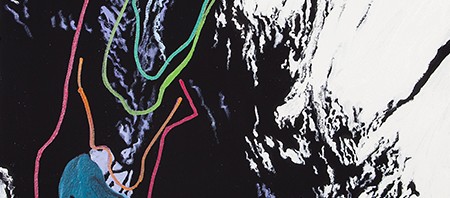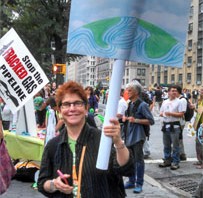Tag: Diane Burko
-

Talking with Diane Burko on art and climate change
My conversation with climate artist Diane Burko was posted on Creative Disturbance, a podcasting platform for dialogue among artists and scientists on sustainability and environmental issues. We’re happy to join others on their Art & Earth Sciences channel, shining different lights on urgent issues relating to climate change—especially this week, as the…
-

Got Climate Change?
I was one of the 300,000-plus people in the People’s Climate March in New York on September 21 – and like many others there, it had been a long time since I joined a march. I couldn’t pass up the opportunity to be part of a big crowd, all sharing a growing feeling of alarm over…
